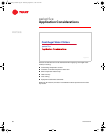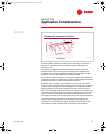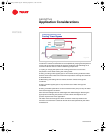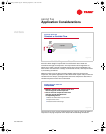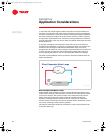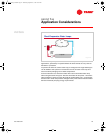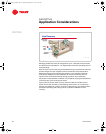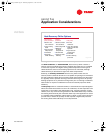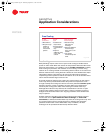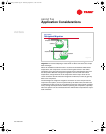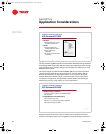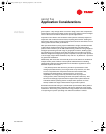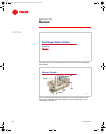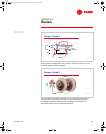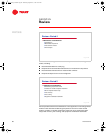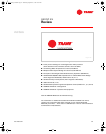
44 TRG-TRC010-EN
notes
period five
Application Considerations
Free Cooling
Many buildings require some form of year-round cooling to handle interior
spaces or other loads. When the outdoor air temperature falls below the indoor
dew point temperature, it is possible to use an air-side economizer to satisfy
these cooling requirements. This method of “free cooling” involves using
outdoor air for cooling instead of recirculating warmer indoor air. It is the most
efficient method of free cooling because it allows all of the chilled water and/or
refrigeration system components to be turned off. This method, however,
requires larger duct systems to deliver the outdoor air to the air handler and to
return and exhaust this larger amount of air.
A second method of applying free cooling is to pump water from the cooling
tower loop directly into the chilled water loop when its temperature is low
enough to satisfy the cooling load. This is commonly called the strainer cycle
because a strainer or filter is needed to prevent debris and contaminants
carried by the cooling tower water from entering the chilled water loop.
Although this method is very efficient, the contamination common in open
cooling tower systems causes concern about “fouling” (deposits of scale or
sludge) inside the chilled water coils. Ongoing treatment of the chilled water
loop is required.
Another method of providing free cooling is similar to the strainer cycle but
involves the use of a plate-and-frame heat exchanger, or water-side
economizer, to isolate the chilled water loop from the cooling tower loop. This
is a popular method of free cooling because it is efficient and eliminates
potential contamination of the chilled water loop. In addition, the heat
exchanger can be operated simultaneously with the chiller.
air-side
economizer
strainer
cycle
◆ Potential fouling
limited to heat
exchanger
◆ Requires additional
heat exchanger,
piping, valves, and
controls
◆ Can operate
simultaneously with
chiller
◆ Most efficient
◆ Requires larger
outdoor air,
return, and
exhaust duct
systems
◆ Coldest water
temperatures
◆ Potential fouling
in chilled water
loop
◆ Requires
additional piping,
valves, and
controls
plate-and-frame
heat exchanger
Free Cooling
Figure 60
trgtrc010_book.book Page 44 Wednesday, September 1, 1999 10:42 AM



